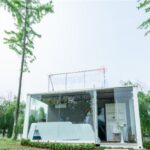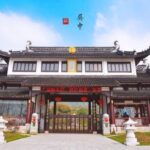Baoguo Temple in Suzhou was first built during the Xianchun period of the Song Dynasty. It was originally located to the west of the Confucian Temple and was named ‘Baoguo Chan Monastery’. In 1285 (the 22nd year of Zhiyuan in the Yuan Dynasty), it was donated and rebuilt by the disciplinary inspector of the lake circuit. Puzhao served as the abbot, and at that time, the Zen style was very prosperous. In the early Ming Dynasty, the Chan monastery was incorporated into Kaiyuan Temple. During the Jingtai and Tianshun periods, monk Zhixue requested the court to change the monastery into a temple and it then became a large Buddhist establishment. During the Chenghua period, abbot Cheng Zhao greatly expanded the scale. There were hundreds of buildings including halls, guest rooms, dining halls, and storehouses, covering an area of 47 mu and becoming a large temple. Baoguo Temple is adjacent to the famous Yiyuan Garden in the north. There are twin pagodas in the east and Canglang Pavilion in the south. It is located in a secluded place in the downtown area, presenting an artistic conception of finding tranquility in the bustle and Zen in the tranquility. Currently, there are Buddhist cultural and charitable institutions such as the Suzhou Buddhist Museum, Suzhou Honghuashe, Suzhou Fobo Honghua Art Institute, and Suzhou Honghuashe Volunteer Clinic in the temple. Opening hours: 09:00 – 17:00 from January 1st to December 31st.
Baoguo Temple
Baoguo Temple in Suzhou was first built during the Xianchun period of the Song Dynasty. It was origi[...]









